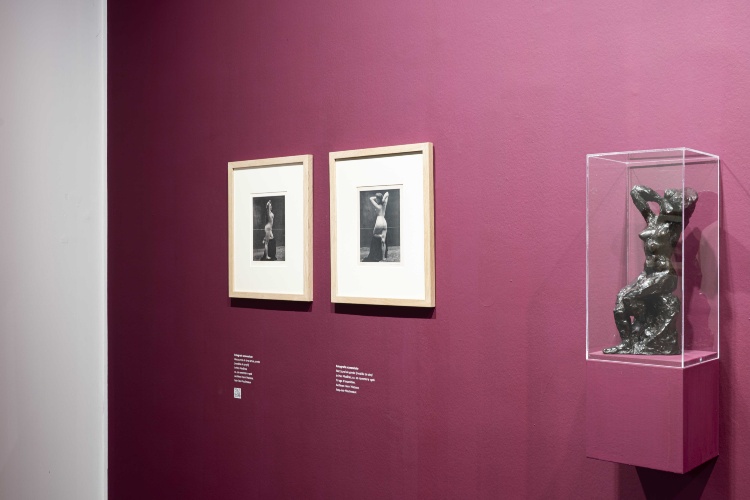curated by Chiara Gatti from a project by Sandra Gianfreda, curator at the Kunsthaus Zürich with Claudine Grammont, Cheffe du cabinet d’art graphique, Center Pompidou
Henri Matisse he is one of the greatest artists of the twentieth century, but, paradoxically, an important part of his production is still overlooked. The figure of Matisse the sculptor is, in fact, not known in the most subtle aspects of his research. Although painting has always remained his main expressive modality, “his” language and the form of investigation of the visible to which he dedicated himself throughout his life, Matisse simultaneously conducted a reflection on sculpture (and also on engraving) which makes he is one of the most complete artists of the last century. His versatility explored various techniques simultaneously, with curiosity and keen experimentation. Against the background of this multifaceted intelligence, Matisse’s sculptural work reveals a parallel life to that of the colourist, a double soul devoted to matter, volume, space, which deserves to be placed in relation – in terms of processes and goals – with that of other great sculptors of the 20th century, heirs of Auguste Rodin’s lesson and who became geniuses of the avant-garde. From Brancusi to Giacometti, from Boccioni to Wotruba.
For the first time in Italy, the MAN Museum today dedicates an exhibition to the sculpture of Henri Matisse. The exhibition project, edited by Chiara Gatti , rereads and adapts to the spaces of the Sardinian museum, the new and complex concept of the Matisse Métamorphoses exhibition organized in 2019 by Kunsthaus in Zurich and the Matisse Museum in Nice.
A project intended to rethink Matisse, to reconsider the role of his work in the art panorama of the first half of the 20th century, in the light of a broader aesthetic research that sees sculpture as the vehicle for new and revolutionary formal solutions. In this necessary insight, it emerges that the human figure in particular was the main theme of his tension towards synthesis. From the investigation of the body, posture, gesture or physiognomy, Matisse developed a path of geometric reduction of the image which led him towards an abstraction bordering on the radical.
As the artist himself stated in 1908 in his Notes d’un peintre: « what interests me most is neither the still life nor the landscape, it is the figure ». The figure, not for its pathos, its lyricism, moods or existential inflection, but for its sense of presence in space and its ideal evolution over time. In fact, Matisse questioned the body in its relationship with the immediate environment and with the changing circumstances over a long period of time. Here then is the evolution of a naturalistic fact into a final synthesis that sublimates contingency into a dimension of absolute perfection. Space conditions, in turn, a system of subtle relationships between physical substance and inhabited void, between gestures and the dynamic lines that they draw in the air.
The exhibition begins, therefore, with an analysis of the artist’s method of creation and his work of transforming the figure into serial variations. The itinerary aligns sequences of bronzes, dating from the early 1910s to the 1930s, and subjects presented in their various subsequent states and combined with the artist’s sources of inspiration, including photographs of nudes and posing models, as well as an essential selection of few paintings in which the motifs themselves reveal the double soul of his parallel research, pictorial and sculptural, in particular in addressing the dominant themes of the nude, dance and odalisque. Through around 30 sculptures and around twenty drawings, engravings, as well as period photographs and original films, Matisse’s sculpture will be placed in relation to the subjects of his life, his magnificent obsessions linked to the female form, to the physiognomic research on models, to the attitudes and plasticity of the volumes.
Against the background of this composite research, here are many unique figures, such as The tiarees , of which there are no different stages, while others are repeated at different intervals, varying and transforming, like the famous cycle of Jeannette (IV) . From here the artist develops a conceptual approach that can be described as a sort of method of formal progression. As in a “metamorphosis”, which explains the title of the exhibition well, his figures evolve from a natural transcription to a radical synthesis of the visual data.
Even in his painting – as has been widely studied by critics in the past – it is possible to detect this process of metamorphosis, without however ever going so far as to consider actual cycles of works as “series”, but rather as the result of a long process of elaboration which finds in sculpture and graphics, combined with painting itself, investigative tools connected to each other, in the idea of a liquid boundary between techniques. An example of this is there ‘Odalisque of the Museo Novecento in Milan, which finds subtle and surgical counterparts and relationships with contemporary drawings and bronzes and whose entire sequence the exhibition will align.
The exhibition is created in collaboration with Expo poster.
click here to listen to the audio guide
Technical details
In collaboration with Kunsthaus Zürich, Musée Matisse de Nice
Bilingual ita/en catalogue: Sole24ore Cultura
Exhibition coordination by Rita Moro, Myrtille Montaud and Manifesto Expo
Texts by Sandra Gianfreda, Bärbel Küster
With the participation of the Archaeological Museum of Nuoro
Media Partnership : Radio Monte Carlo – www.radiomontecarlo.net
Press office
STUDIO ESSECI – Sergio Campagnolo Via San Mattia 16, 35121 Padua Tel. +39.049.663499
contact person Simone Raddi, simone@studioesseci.net www.studioesseci.net


